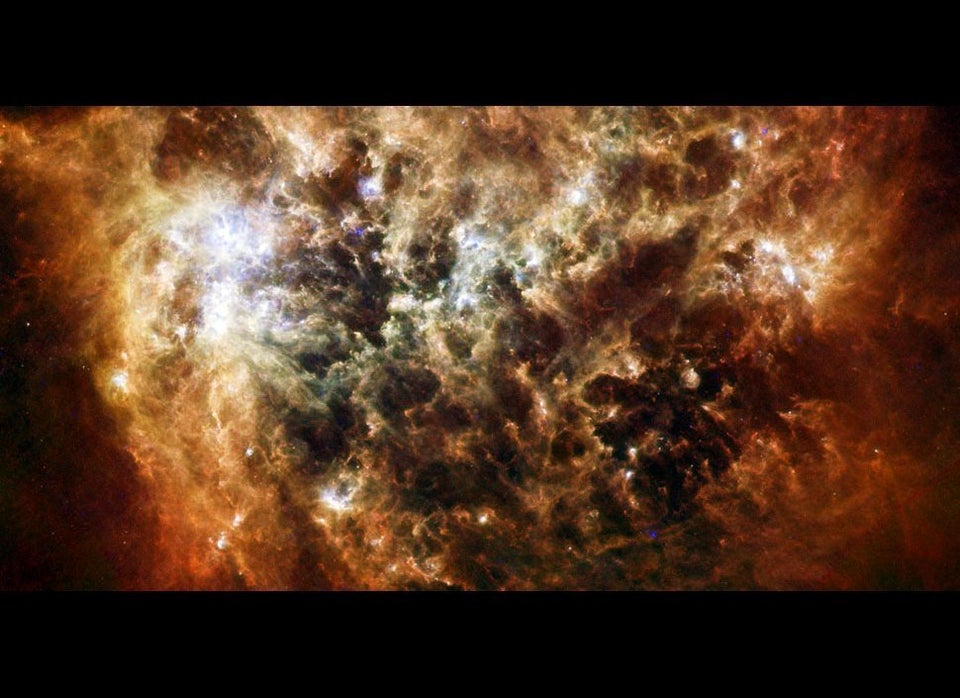
By Richard A. Kerr
Solar system bodies unprotected by even a bit of atmosphere inevitably age—except, apparently, for the asteroid Vesta. Other airless bodies, including the moon, fall prey to blasts of cosmic dust and charged particles in the sun's wind. But viewed from Earth, 550-kilometer-diameter Vesta seemed immune to all that.
This week, researchers analyzing spectral color data returned by the Dawn spacecraft can confirm that Vesta has mysteriously escaped eons of the kind of "space weathering" that has aged the surface of other asteroids. And Dawn's spectral observations are also showing how a well-known "gardening" process on asteroids is smoothing out Vesta's age spots.
In close orbit around Vesta since July 2011, Dawn got the closest look ever at Vesta's surface before it left orbit in September to head for its second target, asteroid Ceres. But planetary spectroscopist Carlé Pieters of Brown University and her colleagues report today in Nature that even Dawn's up-close inspection revealed no sign of space weathering's classic signature—an overall darkening and an imperceptible spectral shift toward a redder color.
Microscopic examination of lunar rock and meteorites from other asteroids had shown that this sort of space weathering results from nanometer-size blobs of metallic iron—called nanophase iron—coating grains of rock. Nanophase iron forms when impacting bits of asteroidal dust, solar wind charged particles, or both vaporize iron bound in minerals. The iron vapor then deposits itself as metallic blobs on the nearest surface.
But even with the new Dawn data, why Vesta is immune to space weathering remains a mystery. Roger Fu of the Massachusetts Institute of Technology in Cambridge and his colleagues have suggested the solution is a vestan magnetic field. They recently found signs of a magnetic field in a meteorite that had been blasted off Vesta. In their paper in the 12 October issue of Science, they argued that this suggests the whole crust of Vesta still carries a magnetic field that could have fended off the charged particles of the solar wind all these eons. Small bubbles of magnetic field do seem to confer such a protective effect in small regions on the moon, leaving lighter-toned "swirls" on the otherwise darkened, weathered lunar surface.
Planetary scientist Lindsay Keller of NASA's Johnson Space Center in Houston, Texas, has another idea. "If I were going to place money on this," he says, "I'd say it's a compositional effect." Vesta's crustal rock contains much less iron than does lunar rock, he explains. So the solar wind might not be able to vaporize enough iron to make many metallic blobs.
Researchers could soon confirm at least one sort of protection against the aging effects of space weathering. Keller and others are now space weathering a variety of rocks in the laboratory to sort out compositional effects. Testing the magnetic field idea will be tougher. Dawn was scheduled to carry a magnetometer to measure any magnetic fields around Vesta and Ceres, but cost overruns forced Dawn investigators to drop the instrument from their final design.
Dawn data did resolve another Vesta mystery. Impacts on the asteroid have splashed lighter rock out of the center of their craters beyond the rims to form bright, radiating "rays" of ejecta. On the moon, space weathering slowly darkens such bright rays, eventually erasing them. But on unweathered Vesta, the same sorts of blemishes disappear without space weathering. Again drawing on Dawn spectral data, Pieters and colleagues conclude that the steady rain of asteroidal debris falling on Vesta splatters debris across the surface and churns the rocky "soil" covering the surface. This "gardening" effect uniformly mixes brighter ray material into the rest of the soil, causing the rays to vanish. So not only does Vesta resist the aging effects of space weathering, but the pummeling it must take over time heals the discoloration that comes with age.
ScienceNOW, the daily online news service of the journal Science
